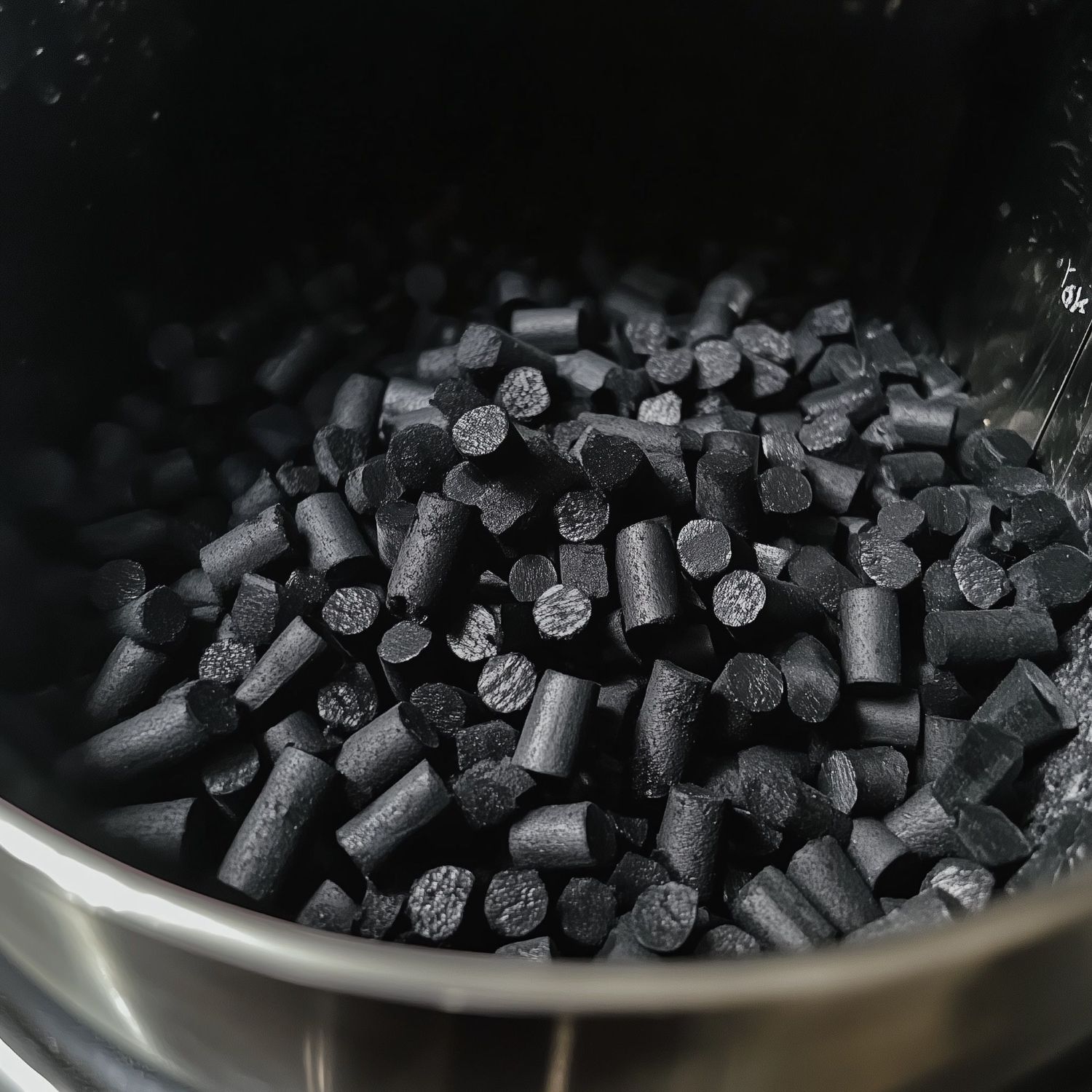We’re shaping a more responsible steel industry.
We have the opportunity to do things differently
ResponsibleSteel is a global, not-for-profit organisation created to maximise steel’s contribution to a sustainable world. Working collaboratively with our members, we have developed an independent standards and certification programme for steel via a process that uses the ISEAL Codes of Good Practice as a reference. Together, we are setting the global standard for responsibly produced net-zero steel.

We’re at a pivotal moment in the steel industry
According to ResponsibleSteel's calculations using data from RMI and the International Energy Agency (IEA), the steelmaking process, from the extraction of raw materials to the production of steel, accounts for 10% of global GHG emissions. We face a collective challenge to transform the industry, reducing global emissions while ensuring a just transition for workers and local communities.
We have over 160 members working to deliver on our mission to drive responsible steel production.
According to the IEA's Net Zero Emissions Scenario, we need to reduce steel industry emissions by at least 90% by 2050, compared to 2022.
We have over 80 ResponsibleSteel certified sites globally.
Over 230,000 workers are covered by ResponsibleSteel certification.
Over 30% of furnaces covered by ResponsibleSteel certification are EAFs.
This is the future of steel
Our members are at the heart of our work
ResponsibleSteel’s membership consists of representatives from across the steel value chain, including businesses, NGOs, trade associations, and other organisations with an interest in our mission. This means our standards are uniquely shaped by multiple perspectives, and their adoption requires the support of both business and civil society members. We encourage organisations globally to join us to create lasting impact for people and the planet.








































Certified sites around the world

Latest news & events


September 2025 Newsletter
The September edition of the ResponsibleSteel™ newsletter is here.
India is an essential part of the global journey towards a responsible, low-emissions steel sector. Our recent event in New Delhi, Accelerating Decarbonisation of the Steel Sector in India, marked an important milestone in our work in the region. The discussions and insights shared were invaluable, and we thank all who contributed.
We are also calling for nominations for a Board Director in the Business category, an important opportunity to help shape ResponsibleSteel’s future direction.
In this month’s newsletter, you can read about:
- Highlights from our New Delhi event
- A call for Board Director nominations
- Welcoming Instant Steel Solutions as a new member
- A member blog from Karmanterra on biocarbon in steelmaking
- Updates on the ResponsibleSteel Standard revision
- Reflections from our latest Just Transition webinar
…and more.
Read the full newsletter here.


Biocarbon in steelmaking: A natural path to decarbonisation with real challenges
In this blog, authored by Karmanterra, the opportunities and challenges of using biocarbon in steelmaking are explored. Biocarbon offers a natural pathway to reduce emissions and support compliance under frameworks such as the EU ETS, but scaling its use requires reliable biomass supply chains, investment in infrastructure, and careful technical integration. Drawing on developments in regions like the American Southeast, Karmanterra highlights how nature-based solutions can play an important role in the steel industry’s journey to net zero.
As global pressure mounts on industries to decarbonise, the steel sector, one of the world’s largest industrial carbon emitters, faces growing scrutiny. In Europe, regulatory frameworks like the EU Emissions Trading System (EU ETS) are intensifying incentives for companies to find lower-carbon pathways. One promising solution gaining momentum is biogenic carbon, commonly known as biochar or biocarbon, as a substitute for fossil-based coal and coke in steelmaking.
Why biocarbon?
Biocarbon is produced by pyrolyzing or gasifying biomass such as forestry residues, agricultural waste, or other organic matter in the absence of oxygen. The resulting material is rich in carbon and can replicate many of the properties of coal or coke in metallurgical processes. From an environmental standpoint, the carbon in biocarbon is considered biogenic—originating from recently living organisms—rather than geologic sources like coal that release fossil carbon when burned. This distinction is critical under the EU ETS, where biogenic emissions are generally exempt from compliance costs.
By replacing fossil-based reductants with biocarbon, steelmakers can lower their reported emissions and reduce liabilities under carbon pricing mechanisms. This could transform steel’s traditionally high-carbon footprint into a more circular, nature-aligned process.
The challenges of scaling a nature-based solution
Despite its promise, the integration of biocarbon into steelmaking faces significant challenges. The steel industry consumes tens of millions of tonnes of coal and coke annually. Replacing even a fraction of this with biocarbon requires a consistent, large-scale biomass supply chain, which is both a logistical and environmental hurdle.
Forestry residues, agricultural byproducts, and energy crops may seem abundant, but sourcing sustainable biomass on an industrial scale demands a sophisticated supply chain close to pyrolysis sites to limit logistical costs and carbon emissions. Proximity to rail or ports is also essential for delivery to steel mills.
Pyrolysis facilities capable of producing metallurgical-grade biocarbon are still limited in number and capacity. The capital expenditure required to build out this infrastructure is significant, and without long-term offtake agreements, financing remains difficult.
Technical differences also exist between biocarbon and traditional coke. Biocarbon generally has lower mechanical strength, different combustion characteristics, and higher reactivity, affecting furnace operation, energy efficiency, and product quality. Naturally derived biogenic materials often contain higher levels of trace minerals such as silicone, boron, and phosphorus, which can be particularly challenging for stainless steel production. As a result, integrating biocarbon into blast furnace and EAF operations requires careful adjustment of feedstocks and may not be feasible in all plant configurations and furnace types.
The American Southeast as a supply source
The American Southeast offers ample opportunity for global biocarbon development. Often called the American wood basket, the region is dominated by fast-growing Southern yellow loblolly pine. Timber inventories remain high, notably in Mississippi, Alabama, Virginia, and Arkansas, where sawtimber volumes are projected to rise by about 17% over the next 10 years.
This abundance of resources could provide the steel industry with the capacity and cost structure to scale up biocarbon adoption. We at Karmanterra have received accreditation from the Sustainable Biomass Program (SBP) to verify and account for the sustainable nature of our biomass to meet the needs of the EU ETS and other cap and trade programs.
Regulatory incentives and the path forward
Policy support is strengthening. The EU ETS continues to tighten, making low-carbon alternatives more economically attractive. Several countries now offer subsidies or tax incentives for industrial decarbonisation, improving the investment climate for biocarbon.
Hybrid steelmaking routes—such as direct reduced iron (DRI) using hydrogen—could work alongside biocarbon, creating flexible, multi-pathway decarbonisation strategies.
Still, for biocarbon to become a viable solution, it will require cross-sector collaboration: from biomass suppliers and pyrolysis operators to steel producers and policymakers. It will need investment in infrastructure, standardised quality specifications, and robust sustainability criteria to ensure that biocarbon use doesn’t create new problems.
Conclusion
Biocarbon offers a real opportunity to reduce steelmaking’s climate impact while offering a pathway to regulatory relief under cap-and-trade systems like the EU ETS. Realising this potential will mean overcoming a complex mix of scale, supply, and technical challenges. As industries and governments accelerate toward net zero, nature-based solutions like biocarbon must be embraced—not as silver bullets, but as integral components of a diversified decarbonisation strategy.
Click here to learn more about Karmanterra.
Note: All opinions expressed within guest blogs are of the author alone, and do not reflect the views of ResponsibleSteel. If you are one of our members/partners and would like to submit a guest blog, please read the editorial guidelines on our website for more information.


The future of steel sustainability: In conversation with Philippe Aubron, Head of Global Automotive at ArcelorMittal
Philippe Aubron, ArcelorMittal’s Head of Global Automotive, joined ResponsibleSteel’s Board of Directors earlier this year. We asked him a few questions on the industry’s most promising developments, growing demand for sustainable, low-emission steel, and the value of ResponsibleSteel in supporting the shift towards sustainable practices.
1. You’ve witnessed the steel industry evolve significantly over the past three decades. What do you think are the most important changes shaping the sector today?
Over the past 30 years, the steel industry has undergone a profound transformation. Today, the most significant change is the shift toward sustainability and decarbonisation. This is driven by both regulatory pressure and customer demand, particularly in sectors like automotive. Digitalisation and advanced manufacturing technologies are also reshaping how we produce and use steel, enabling greater efficiency, traceability, and innovation. The industry is no longer just about volume and cost—it’s about value, responsibility, and long-term impact.
2. What role do you see ResponsibleSteel playing in helping the industry deliver on its sustainability commitments?
ResponsibleSteel provides a credible, independent multistakeholder standard that supports transparency and continuous improvement across a broad range of ESG criteria. It helps steelmakers demonstrate responsible practices and gives customers confidence in the sustainability of their supply chains. Importantly, ResponsibleSteel is also working to align with other standards, such as the Low Emission Steel Standard (LESS) and the Initiative for Responsible Mining Assurance, to ensure interoperability and reduce complexity for producers and customers alike. This harmonisation is essential to building trust and accelerating the transition across the industry.
3. What value does ArcelorMittal see from being part of ResponsibleSteel?
The ResponsibleSteel International Production Standard is not just about emissions—it encompasses over 500 ESG criteria, from biodiversity to human rights. As the industry evolves, ResponsibleSteel will be instrumental in setting credible benchmarks and enabling customers to make informed choices. The Production Standard has been warmly received by all ArcelorMittal sites that have undertaken the certification process, which proved valuable in helping to identify opportunities to further improve ESG practices and performance. It has served to strengthen our management systems, ensuring we continue to embed robust ESG standards across our operations.
4. Where (regionally or technologically) do you see the most promising developments in sustainable steel production emerging?
ArcelorMittal is already producing low carbon emission steel in various locations around the world, although Europe remains a frontrunner due to its regulatory ambition. However, the technological path is complex and requires strong policies to address global steel overcapacity, unfair trade, carbon leakage, clean energy cost and availability, and prioritising scrap for circularity and decarbonisation within the EU. A framework to address these issues and more was set out by the European Commission in its Steel and Metals Action Plan which was published earlier this year. However, what is lacking is speed of implementation—the framework outlined in the Steel and Metals Action Plan needs to be converted into effective legislation. We remain hopeful that this can be achieved as soon as possible.
5. As Head of Global Automotive for ArcelorMittal, how is demand for low-emission and sustainable steel evolving among automotive customers? What are going to be the industry’s biggest challenges in meeting this demand?
Automotive OEMs are increasingly integrating sustainability into procurement, driven by Scope 3 emissions targets and consumer expectations. Demand for low-carbon steel is gradually increasing, but the real challenge lies in scaling supply to meet demand at a competitive cost. While some customers are already securing volumes for upcoming vehicle launches, the majority remain hesitant to absorb the higher cost associated with the 'green premium'—despite clear signals that the shift is underway. The industry must overcome high production and energy costs, limited availability of green inputs, and the need for harmonised standards. Also, more work can be done to increase circularity—for example, scrap steel buybacks—and recycling, and therefore create closed loops.
6. What drew you to join the ResponsibleSteel Board at this moment in the industry’s transition?
This is a pivotal moment for the steel industry. The decisions we make now will shape the sector’s impact on climate, communities, and the economy for decades to come. I joined the ResponsibleSteel Board to help ensure that the transition is ambitious, credible, and inclusive. With my background in automotive and global operations, I hope to bring a practical perspective to the table and help bridge the gap between producers and end-users.





